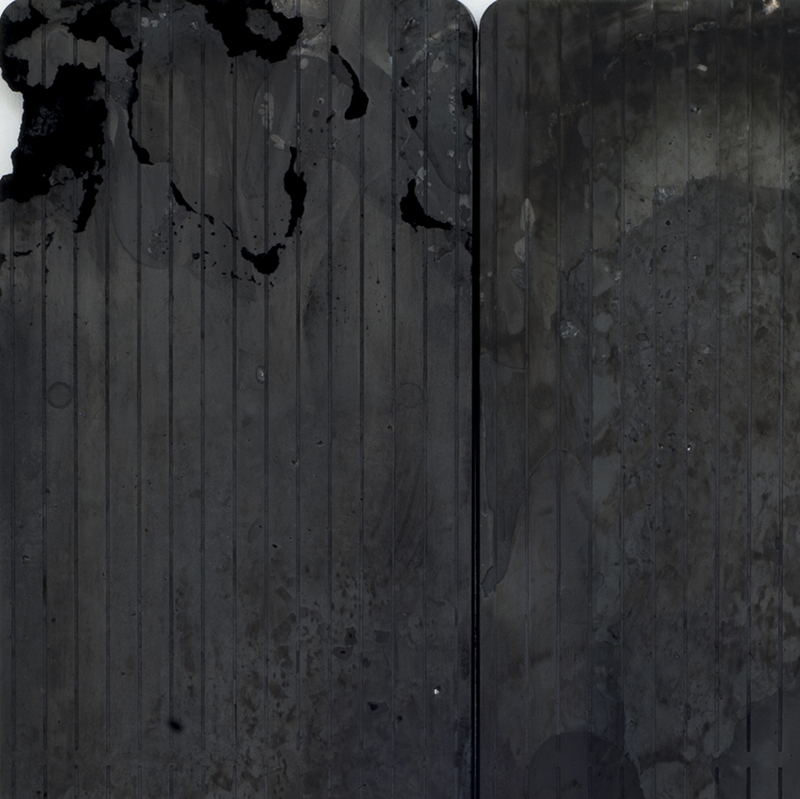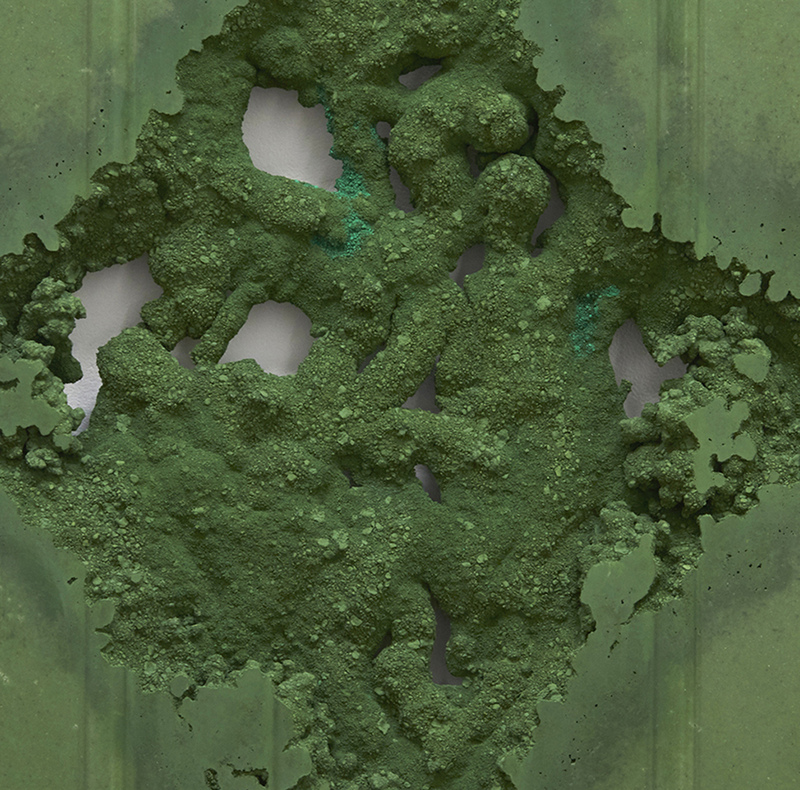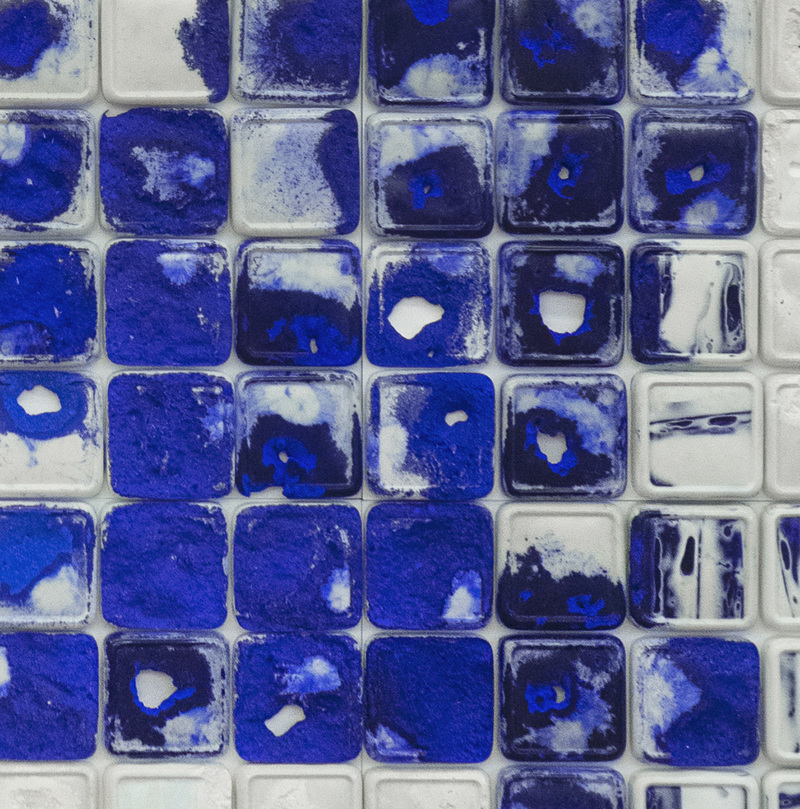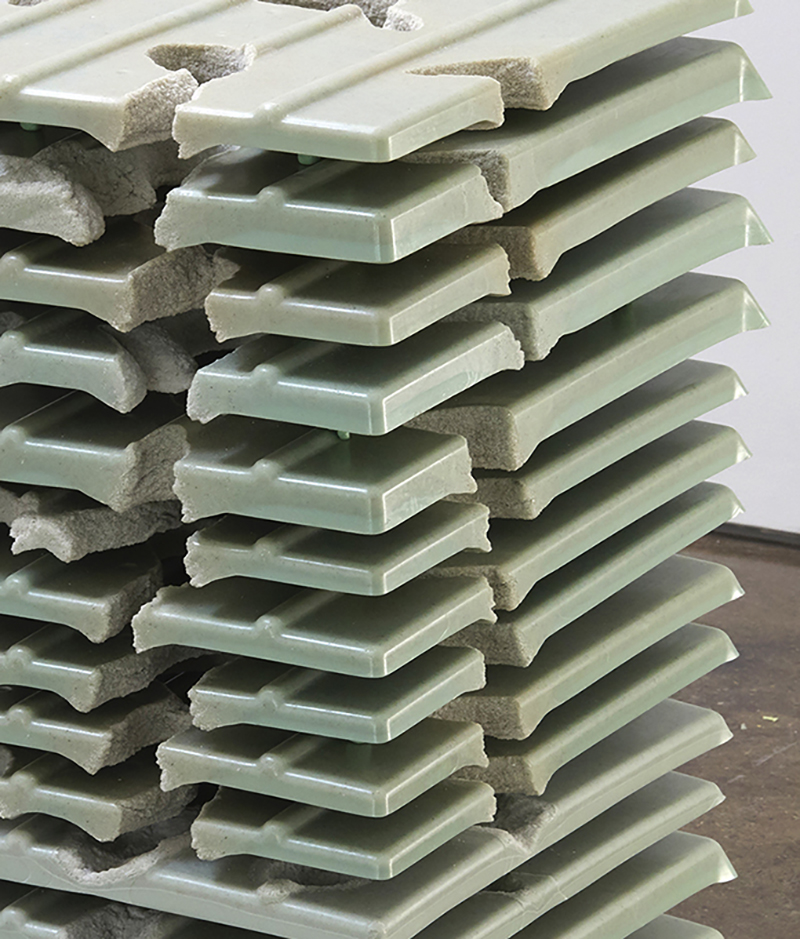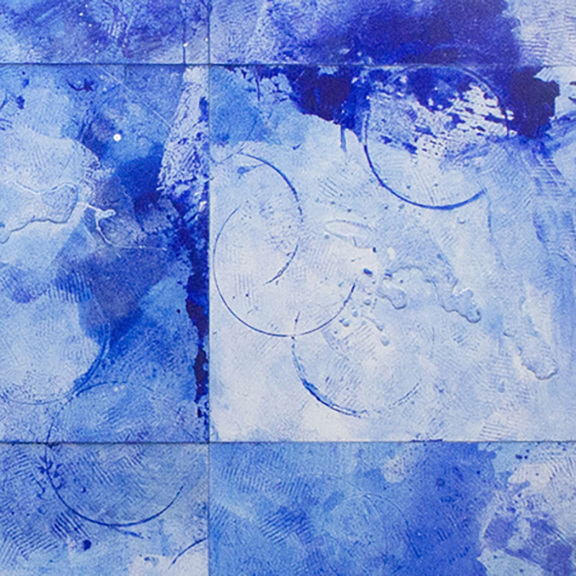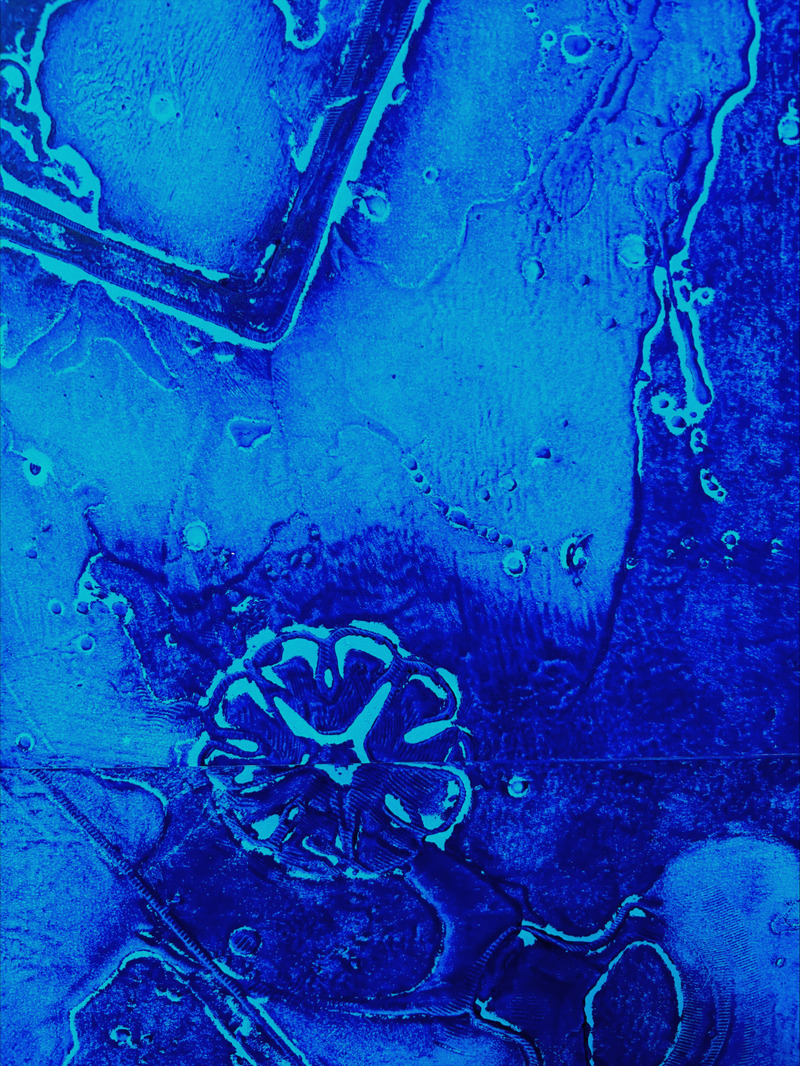About
Over the last decade I have been developing a visual lexicon that focuses on the ubiquitous nature of non-biodegradable plastics. Anthropogenic materials such as containers, bins, disposable packaging etc. are embedding themselves into our geologic record as a layer of plastic sediment and hybrid plastiglomerate rock. Many years from now, what kind of trace-evidence will exist from our current period of plastic production, consumption and waste?
I envision my work as processed-based art which further imagines a future geologic narrative that includes fossilized plastic waste.
Slabs
I have been salvaging recycled and discarded plastic containers since 2012, incorporating them into my studio practice. They are revived as ready-made moulds and used to produce multiple casts that present themselves as relief sculptures. The casts replicate the subtle industrial contours of the plastic waste they are derived from, and are punctuated by instances of erosion.
My pigment selection reflects natural mineral colours found in earthly materials such as coal, marble, sulphur and lapis lazuli. Both pigment and embedded sites of erosion allude to the earth’s mineral layers and its geologic record. The Slabs propose a future scenario about our environment and the kind of trace-evidence that will remain after a prolonged period of plastic waste. It is conceivable that our disposable, non-biodegradable containers will fossilize over time creating strange geological forms in the shapes of industrial mass-production.
Slab
: a broad, flat, somewhat thick piece of stone, wood or other solid material.
: a common structural element of modern buildings
: a gravestone that was laid over a grave
: a geological term, a significant constituent of subduction zones
________________________________________________________
Grids & Stacks
Multiple Slabs cast from the same mass-produced plastic form are arranged into compressed stacks or materially dense grids. I use repetition as a tool to mimic the seemingly endless stamping out of industrial product. Repetition suggests continuity that extends indefinitely in two directions, past and future, never finding its ultimate boundary.
_________________________________________________________
Floors & Topographies
My studio process is often messy, leaving visible traces of pigment, binder spills, and scrapes on the floor. While considering my studio practice as a whole, I realized that the floor was a dynamic surface in itself; it was a direct physical record of my creative process. In 2014 I began laying a temporary floor down in the studio before starting the production of a new series, enabling me to use the floor as exhibition material when the series was complete.
Along the same line of thought, in 2016 I made my first collograph print pulled from a section of my studio floor. (Note: a collograph print is made from a print plate with different textures, and the textures in this case are created from spills and scrapes that occur on my studio floor while working. I refer to them as Topographies.) Like the floors, the topographies are physical records of my studio process. In a larger sense, the floors & topographies reference the concept of trace evidence or trace fossils.
***
Together, this work creates a self-referential loop about studio history and process. It also connects to larger themes about the despoliation of our environment by industrial refuse, and the nature of the trace-evidence - what we leave behind.
Over the last decade I have been developing a visual lexicon that focuses on the ubiquitous nature of non-biodegradable plastics. Anthropogenic materials such as containers, bins, disposable packaging etc. are embedding themselves into our geologic record as a layer of plastic sediment and hybrid plastiglomerate rock. Many years from now, what kind of trace-evidence will exist from our current period of plastic production, consumption and waste?
I envision my work as processed-based art which further imagines a future geologic narrative that includes fossilized plastic waste.
Slabs
I have been salvaging recycled and discarded plastic containers since 2012, incorporating them into my studio practice. They are revived as ready-made moulds and used to produce multiple casts that present themselves as relief sculptures. The casts replicate the subtle industrial contours of the plastic waste they are derived from, and are punctuated by instances of erosion.
My pigment selection reflects natural mineral colours found in earthly materials such as coal, marble, sulphur and lapis lazuli. Both pigment and embedded sites of erosion allude to the earth’s mineral layers and its geologic record. The Slabs propose a future scenario about our environment and the kind of trace-evidence that will remain after a prolonged period of plastic waste. It is conceivable that our disposable, non-biodegradable containers will fossilize over time creating strange geological forms in the shapes of industrial mass-production.
Slab
: a broad, flat, somewhat thick piece of stone, wood or other solid material.
: a common structural element of modern buildings
: a gravestone that was laid over a grave
: a geological term, a significant constituent of subduction zones
________________________________________________________
Grids & Stacks
Multiple Slabs cast from the same mass-produced plastic form are arranged into compressed stacks or materially dense grids. I use repetition as a tool to mimic the seemingly endless stamping out of industrial product. Repetition suggests continuity that extends indefinitely in two directions, past and future, never finding its ultimate boundary.
_________________________________________________________
Floors & Topographies
My studio process is often messy, leaving visible traces of pigment, binder spills, and scrapes on the floor. While considering my studio practice as a whole, I realized that the floor was a dynamic surface in itself; it was a direct physical record of my creative process. In 2014 I began laying a temporary floor down in the studio before starting the production of a new series, enabling me to use the floor as exhibition material when the series was complete.
Along the same line of thought, in 2016 I made my first collograph print pulled from a section of my studio floor. (Note: a collograph print is made from a print plate with different textures, and the textures in this case are created from spills and scrapes that occur on my studio floor while working. I refer to them as Topographies.) Like the floors, the topographies are physical records of my studio process. In a larger sense, the floors & topographies reference the concept of trace evidence or trace fossils.
***
Together, this work creates a self-referential loop about studio history and process. It also connects to larger themes about the despoliation of our environment by industrial refuse, and the nature of the trace-evidence - what we leave behind.
